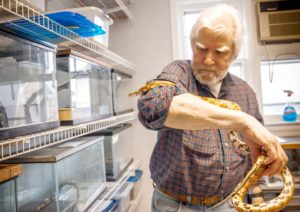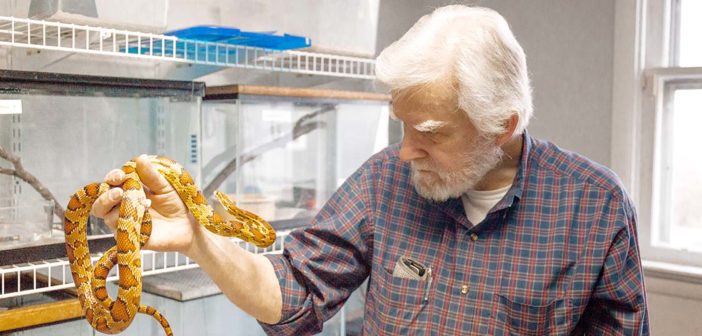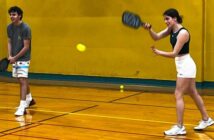David Cundall was interested in snakes at an early age. He started to observe snakes in Montreal while he was studying at the University of Arkansas. Now a professor in Lehigh’s biological science department, Cundall specializes in the evolution of the feeding apparatus of snakes.
“I became interested in seeing how snakes, on the edges of their ranges, differed from the rest of their species in that area,” Cundall said.
For his graduate project, Cundall studied snake chromosomes to see if there were any genetic differences between them.
He also studied the ecology of soft-shell turtles, but didn’t have enough funding to do this research. Cundall said his advisor and professor told him to find something that was cheaper to study.
Cundall began to look at anatomy for his Ph.D., and then he started to study the anatomy of snakes.
“When I got the job at Lehigh, I wanted to see how snake heads actually worked,” Cundall said. “I wanted to see how the muscles work and contract in a snake when they are eating.”
Alexander Megerle, ‘20, is one of the two students who work with Cundall on his research.
Megerle said he got in touch with Cundall his sophomore year because he wanted to get involved with biology research, and he found Cundall through Lehigh’s biology faculty page.
He took interest in Cundall’s research because he was one of the only professors who studies the anatomy of animals. He started working with Cundall in fall 2018.
“I never really had a special interest in snakes before then,” Megerle said. “That happened to be the line of research that I found myself most interested in, and has gradually become more interesting for me.”
Cundall said snakes are an underrepresented form of research in the biological science department due to the fact that they have little relation to how humans work.

David Cundall, a Lehigh professor and researcher, observes one of his snakes in his research center on Feb. 21, 2020. Dr. Cundall is most known for his research regarding the evolution of the feeding apparatus of snakes. (Jake Martin/B&W Staff)
“The only thing in humans that comes close to anything snakes can do is the stretching of tissue,” Cundall said. “Their tissues stretch when they eat large organisms, which is similar to how the tissues stretch when giving birth.”
Megerle said animals have many specialities that humans don’t fully understand. He said nowadays, design problems are being solved by looking through nature, seeing how things are done and how things are designed to look.
Understanding animals is key to understanding how to solve problems for humans, Megerle said.
“The solutions that you see for problems in nature are much more elegant than the ones that humanity has come up with,” he said.
Travell Gardner, ‘23, is deciding what research she wants to do for next year.
She said she is interested in a variety of fields as a biology major.
“Although I am not currently sure what I want to research, I have always been interested in the study of reptiles,” Gardner said.
She said wants to understand the anatomy of how snakes function and eat.
Cundall and Megerle are currently working on a project to discover what happens in the skin muscles of corn snakes when they climb.
“Corn snakes can climb trees in ways that a lot of other snakes can’t do and have these folds along the underside of their skin that helps them get stuff,” Megerle said. “No one has been doing research on how they are able to do this and what sort of muscle contraction allows them to do that.”
They will be traveling to Cincinnati over spring break to do further research on this topic.






Comment policy
Comments posted to The Brown and White website are reviewed by a moderator before being approved. Incendiary speech or harassing language, including comments targeted at individuals, may be deemed unacceptable and not published. Spam and other soliciting will also be declined.
The Brown and White also reserves the right to not publish entirely anonymous comments.
2 Comments
“The solutions that you see for problems in nature are much more elegant than the ones that humanity has come up with,” he said. : I like to think that God makes things interesting for us all and particularly for those with inquiring minds.
God didn’t make anything….This is Evolution at work.